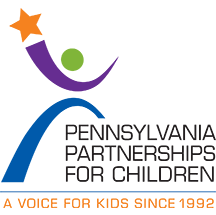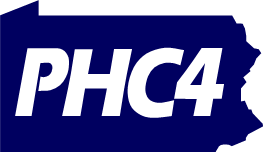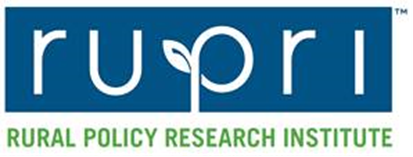- CMS: Medicare Program; Implementation of Prior Authorization for Select Services for the Wasteful and Inappropriate Services Reduction (WISeR) Model
- Public Inspection: CMS: Medicare Program: Implementation of Prior Authorization for Select Services for the Wasteful and Inappropriate Services Reduction Model
- CMS: Secretarial Comments on the CBE's (Battelle Memorial Institute) 2024 Activities: Report to Congress and the Secretary of the Department of Health and Human Services
- HHS: Patient Protection and Affordable Care Act: Marketplace Integrity and Affordability
- HRSA Announces Action to Lower Out-of-Pocket Costs for Life-Saving Medications at Health Centers Nationwide
- Public Inspection: HHS: Patient Protection and Affordable Care Act: Marketplace Integrity and Affordability
- Increased Risk of Cyber Threats Against Healthcare and Public Health Sector
- Eight Hospitals Selected for First Cohort of Rural Hospital Stabilization Program
- Announcing the 2030 Census Disclosure Avoidance Research Program
- CMS: Medicare Program; Hospital Inpatient Prospective Payment Systems for Acute Care Hospitals and the Long-Term Care Hospital Prospective Payment System and Policy Changes and Fiscal Year 2026 Rates; Requirements for Quality Programs; and Other Policy Changes; Correction
- CMS: Medicare Program; Hospital Inpatient Prospective Payment Systems for Acute Care Hospitals and the Long-Term Care Hospital Prospective Payment System and Policy Changes and Fiscal Year 2026 Rates; Requirements for Quality Programs; and Other Policy Changes; Correction
- CMS: Medicare and Medicaid Programs; Contract Year 2026 Policy and Technical Changes to the Medicare Advantage Program, Medicare Prescription Drug Benefit Program, Medicare Cost Plan Program, and Programs of All-Inclusive Care for the Elderly; Correction
- CMS: Medicare and Medicaid Programs; Contract Year 2026 Policy and Technical Changes to the Medicare Advantage Program, Medicare Prescription Drug Benefit Program, Medicare Cost Plan Program, and Programs of All-Inclusive Care for the Elderly; Correction
- CMS: Medicare Program; Prospective Payment System and Consolidated Billing for Skilled Nursing Facilities; Updates to the Quality Reporting Program for Federal Fiscal Year 2026
- CMS: Medicare Program; FY 2026 Hospice Wage Index and Payment Rate Update and Hospice Quality Reporting Program Requirements
Fact Sheets Show Children Enrolled in Medicaid and CHIP by Legislative District

In every community across Pennsylvania, Medicaid and the Children’s Health Insurance Program (CHIP) play a big role in keeping kids covered and healthy.
Through these public health insurance options, nearly half of all Pennsylvania children have access to check-ups, doctor recommended screenings, vaccinations and much more.
Our annual fact sheets provide a breakdown of the more than 1.3 million Pennsylvania children enrolled in Medicaid and CHIP within each legislative district.
PPC uses these fact sheets to educate members of Pennsylvania’s Congressional delegation, state House, and state Senate about the critical role of Medicaid and CHIP in providing families with high-quality, affordable health care for both physical and mental health.
Access the fact sheets here.
According to a new report from Georgetown University’s Center for Children and Families, children in Pennsylvania’s small towns and rural communities depend on Medicaid just as much as children in Pennsylvania’s urban communities. And it shows that Pennsylvania adults and seniors in rural communities are insured through Medicaid at higher rates than their urban counterparts.
This is especially important given most of Pennsylvania’s counties are considered rural. In fact, Pennsylvania ranks 5th highest in the country for the number of people living in small towns and rural areas.
Any large cuts to Medicaid that are currently being considered would pose very serious threats to residents and their health care systems in rural communities that are already struggling.
Pennsylvania relies on federal Medicaid funding to thrive. Federal cuts to Medicaid would shift the burden onto Pennsylvania’s budget and lead to higher uninsured rates among our kids, seniors, pregnant women and people with disabilities.
Read the coverage: Proposed Medicaid Cuts Threaten Rural PA Residents, Hospitals
Frequently Asked Questions for Consumers Whom the Federally-facilitated Marketplace or State-based Marketplaces on the Federal Platform Refers to a State Medicaid/Children’s Health Insurance Program (CHIP) Agency (SMA) and Who are Awaiting a Final Medicaid or CHIP Eligibility Determination from their SMA

The FAQ applies to consumers who were referred by the Marketplace as potentially eligible for Modified Adjusted Gross Income (MAGI)-based Medicaid/CHIP and were referred to their SMA, and who are waiting for their SMA to conduct a final MAGI-based Medicaid/CHIP eligibility determination. This can occur in households where all applicants are found by the Marketplace as potentially eligible for Medicaid/CHIP or in households where some applicants are found eligible for Marketplace coverage and others are potentially Medicaid/CHIP-eligible. Households in the latter scenario will have qualified health plan (QHP)-eligible applicants routed to enroll in coverage with the Marketplace, and applicants assessed as Medicaid/CHIP-eligible will have their application information securely electronically transferred to their SMA for final eligibility determinations and/or enrollment, if eligible. The FAQ can be used to assist consumers navigating these various scenarios.
See FAQs Consumers the FFM Refers to Medicaid and CHIP Agencies.pdf for frequently asked questions.
Latest Reports Released on Pennsylvania Hospital Utilization Rates!

The Pennsylvania Health Care Cost Containment Council (PHC4) publicly released new County-Level Utilization and Condition-Specific Reports today, giving stakeholders in Pennsylvania valuable insight into ambulatory/outpatient usage and hospitalization rates of high interest conditions, using the most recent data available.
County-Level Utilization Reports are updated every quarter and show the overall total number of inpatient hospitalizations and ambulatory/outpatient cases for Pennsylvania residents. These results are displayed by patient age, sex, and payer. The newly released County-Level Utilization Reports reflect data from Q2 of 2024.
PHC4’s County-Level Condition-Specific Reports focus on several high interest conditions displaying county-specific rates of hospitalization for Pennsylvania residents. This information reflects data from the state fiscal year 2024, which is July 1, 2023, through June 30, 2024. The analysis within the County-Level Condition-Specific Reports is limited to Pennsylvania general acute care hospitals.
“This succinct series of reports sheds light on critical health care components at a county-level. This type of reporting is one of many ways PHC4 proudly supports Pennsylvania communities.” said Barry D. Buckingham, PHC4’s Executive Director. Buckingham went on to say that PHC4’s goals include providing fact-based reporting in support of those charged with prioritizing health care resources effectively. The organization believes this is in direct support of the newly established mission of empowering Pennsylvanians through transparent reporting.
PHC4 is an independent council formed under Pennsylvania statute (Act 89 of 1986, as amended by Act 15 of 2020) in order to address rapidly growing health care costs. PHC4 continues to produce comparative information about the most efficient and effective health care to individual consumers and group purchasers of health services. In addition, PHC4 produces information used to identify opportunities to contain costs and improve the quality of care delivered.
For more information, visit phc4.org or review the full report here.
Media contact:
Barry D. Buckingham, Executive Director, PHC4, bbuckingham@phc4.org
Request Free Oral Health Materials from Pennsylvania Oral Health Coalition

Oral health materials are available on the Request Materials page at no cost. Physical and online materials include oral health flyers, posters, rack cards, postcards, and magnets. Topics include general oral health, kids’ health, tobacco/nicotine, workforce, and fluoride.
These resources are great for patient education in waiting rooms, distribution at health fairs and other
community events, and much more.
New RUPRI Report: Evaluating Medicare Advantage Benchmark Setting Methodology on Rural Counties

Dan Shane PhD; Edmer Lazaro, DPT, MSHC; Fred Ullrich, BA; and Keith Mueller, PhD
This brief explores how the process for setting benchmark payments for Medicare Advantage plans may create different incentives across rural and urban counties.
Key Findings:
- Rural counties are less likely to rank in the lower Medicare Fee for Service (FFS) spending quartiles that receive a higher percentage of the county benchmark: 41 percent of rural counties are categorized in combined quartiles 1 and 2 versus 59 percent for urban counties.
- Global caps (maximum benchmark payments based on pre-Affordable Care Act (ACA) county FFS spending) on benchmark payments are much more likely in rural counties, particularly those in the lower-spending quartiles, reducing incentives for supplemental benefits or reduced cost sharing.
Additional products:
- Medicare Advantage Plan Growth in Rural America: Opportunities for Beneficiaries https://www.ruralhealthresearch.org/projects/1004
- Medicare Advantage Plan Growth in Rural America: Availability of Supplemental Benefits https://rupri.public-health.uiowa.edu/publications/policybriefs/2024/MA_Plan_Growth.pdf
Contact Information:
Keith J. Mueller, PhD; keith-mueller@uiowa.edu
Director, RUPRI Center for Rural Health Policy Analysis
University of Iowa College of Public Health
Office: 1.319.384.3832
Call for Presentations: 2025 Pennsylvania State Data User Conference
 The Pennsylvania State Data Center (PaSDC) invites presenters to participate in the 2025 Pennsylvania Data User Conference. This year’s event will be held on May 15, 2025, at Penn State Harrisburg in Middletown. The annual Data User Conference serves as Pennsylvania’s most comprehensive single-day forum for research and developments in demographic and socioeconomic data.
The Pennsylvania State Data Center (PaSDC) invites presenters to participate in the 2025 Pennsylvania Data User Conference. This year’s event will be held on May 15, 2025, at Penn State Harrisburg in Middletown. The annual Data User Conference serves as Pennsylvania’s most comprehensive single-day forum for research and developments in demographic and socioeconomic data.
The PaSDC Data User Conference aims to educate its audience on demographic and socioeconomic research and policies affecting Pennsylvania. Past presentations have focused on research themes (e.g., aging, prison populations, labor force, and rural Pennsylvania), community development (e.g., case studies and community planning), innovations in technology (e.g., database and data visualization software), and other data-related topics.
Sessions at the conference are non-commercial and vendor neutral. Under no circumstance should a session be a direct promotion of an organization’s product, service, or monetary self-interest. The emphasis should be on the application of demographic and socioeconomic data, technology, and other timely topics.
Submission Details
Proposals will be accepted for team, individual, or panel presentations. To propose a session, please email the topic and a brief description or outline (maximum 250 words) to Jennifer Shultz (jjb131@psu.edu) by Wednesday, February 26, 2025. The PaSDC will notify all selected speakers by March 7, 2025.
Presentation Rules
Presentation proposals will be reviewed by the conference planning committee and selections will be made based upon desired topics, flow, educational value, and understanding of the content. All selected presentations will be published in conference material and online.
Agenda Schedule
All presentations will be on May 15, 2025. Conference organizers will set the time for each presentation to optimize the sequencing and flow of content and tracks. Sessions will end by 5:00 PM.
Speaker Benefits
The PaSDC does not pay fees or travel expenses for speakers. All speakers receive complimentary conference registration, including meals, and are featured in the conference publication and on the conference website. These benefits apply only to speaker(s) and do not extend to support staff or colleagues who may accompany them.
Funding Announced! HRSA Rural Maternity and Obstetrics Management Strategies Program (Rural MOMS)
 The Rural Maternity and Obstetrics Management Strategies (Rural MOMS) Program from HRSA’s Federal Office of Rural Health Policy (FORHP), is open and accepting applications for the program’s 4-year period of performance (September 30, 2025 – September 29, 2029). HRSA award up to 3 cooperative agreements for up to $1,000,000 per year, to provide support to establish innovative, collaborative rural obstetric networks to improve maternity care and access to care in rural communities. Applications are due on April 22, 2025.
The Rural Maternity and Obstetrics Management Strategies (Rural MOMS) Program from HRSA’s Federal Office of Rural Health Policy (FORHP), is open and accepting applications for the program’s 4-year period of performance (September 30, 2025 – September 29, 2029). HRSA award up to 3 cooperative agreements for up to $1,000,000 per year, to provide support to establish innovative, collaborative rural obstetric networks to improve maternity care and access to care in rural communities. Applications are due on April 22, 2025.
Rural MOMS funds networks that establish or continue collaborative improvement and innovative models that can provide long-term sustainable and financially viable service delivery to improve maternal and infant health outcomes. The work of these networks supports the goal of the program to improve maternal and infant health outcomes and access to and delivery of maternity and obstetrics care in rural areas and reduce preventable maternal mortality risks and decrease severe maternal morbidity in rural areas.
Eligible applicants include all domestic public or private, non-profit, or for-profit entity providing prenatal care, labor care, birthing, and postpartum care services in rural areas, frontier areas, or medically underserved areas, or to medically underserved populations or Indian Tribes or Tribal organizations.
A technical assistance webinar via Zoom is scheduled for applicants on Wednesday, February 12, 2025, at 2:00 pm Eastern. If you are unable able to join the webinar, a recording will be made available later.
Examples of previously funded projects under this program are available at this link. Applicants may also benefit from the availability of Evidence-Based Toolkits for Rural Community Health which are informed by previous program investments by the Federal Office of Rural Health Policy and the Rural Health Information Hub.
For more information about this funding opportunity, contact RMOMS@hrsa.gov
Helpful links:
- Notice of Funding Opportunity on Grants.gov
- Rural Maternity and Obstetrics Management Strategies (RMOMS) Program | HRSA
- Profiles of current and past Rural MOMS awardees:
- RMOMS Awardee Directory – FY 2021 Cohort (PDF – 1 MB)
- RMOMS Awardee Directory – FY 2022 Cohort (PDF – 1 MB)
USDA Rural Development Names Acting State Director in Pennsylvania

With the changing of Presidential Administrations on Jan. 20, 2025, USDA Rural Development (RD) announced that our very own Jeremy Wilson will serve as the Acting State Director for the organization.
Wilson, 48, is a native of Tunkhannock, Pa., where he graduated high school in the Class of 1994.
“I am honored to serve as Pennsylvania’s Acting State Director again,” Wilson said. “I am thrilled to support our dedicated employees to fulfill our agency mission.”
Wilson was serving as the Deputy State Director for the department prior to the appointment.
Wilson has 27 years of experience with USDA Rural Development, including over 15 years in originating and servicing rural loan and grant programs, and the last 12 years in administration. Jeremy has worked in multiple field offices, administered multiple rural development programs, and has experience at the national level from agency details, task forces, and special projects.
Wilson earned his Bachelor of Arts Degree from Lebanon Valley College in 1998 and his Masters Degree in Public Administration from Shippensburg University in 2003. In addition, he is also a graduate, and current advisory board member, of the Pennsylvania Rural/Urban Leadership Program (RULE), which is a two-year intensive leadership course administered through the Pennsylvania State University.
CMS Announces New Resources in the No Surprises Act Toolkit for Consumer Advocates

CMS is adding four new documents to the No Surprises Act (NSA) toolkit to help assisters and advocates who work with consumers faced with surprise medical bills. The new resources include:
- A Quick Start Guide to help advocates quickly find the resources they need for a consumer’s situation;
- The No Surprises Act at a Glance, which gives a high level overview of the NSA’s consumer protections;
- A resource outlining the Key Responsibilities for Health Care Providers and Facilities Under the No Surprises Act; and
- A resource outlining the Key Responsibilities for Group Health Plans and Health Insurance Issuers Under the No Surprises Act.
Altogether, the toolkit contains more than 20 individual resources and a PDF compilation of all the resources. It is posted at https://www.cms.gov/nosurprises/consumer-advocate-toolkit.
HRSA Announces Key Technology and Governance Milestones in its Organ Procurement and Transplantation Network Modernization Initiative

Issuing Next Generation IT Solicitation and Launching OPTN Board Special Election Process with a New Nominating Committee Represent Major Advances in Historic Reform of Organ Transplant System
The Health Resources and Services Administration (HRSA), a division of the U.S. Department of Health and Human Services, announced two key advances in the historic effort to improve the Nation’s organ transplant system and better serve the patients, families, donors and health care providers who make transplantation possible. HRSA is:
- Releasing a new solicitation to support the next generation of Organ Procurement and Transplantation Network (OPTN) technology infrastructure that is agile, resilient, interoperable, and user-friendly; and
- Launching the special election process for a new OPTN Board of Directors with the formation of a Transitional Nominating Committee, a critical step in HRSA’s commitment to strengthen OPTN governance, mitigate conflicts of interest, and establish independence.
“Modernizing the organ transplant system to better serve the more than 100,000 people on the organ transplant waiting list has been one of HRSA’s top priorities in the Biden-Harris Administration,” said HRSA Administrator Carole Johnson. “With bipartisan leaders in Congress, we have worked to reform this lifesaving system to ensure that it meets the highest standards for performance, transparency, and accountability. Americans on the organ waitlist deserve no less. We look forward to the progress to come in the months and years ahead as HRSA continues to implement the bipartisan Securing the U.S. OPTN Act.”
The new solicitation released today will enable HRSA to modernize OPTN IT systems and build on the OPTN modernization awards announced in September 2024. As a Multiple Award Blanket Purchase Agreement, it will allow HRSA to engage with experienced vendors to develop key pieces of the modern OPTN IT system in a timely and efficient manner. The solicitation is posted on the General Services Administration e-Buy platform and announced on SAM.gov.
A transitional nominating committee will support the Special Election for a new OPTN Board of Directors, which in partnership with HRSA oversees organ allocation policy and membership standards. In forming the Transitional Nominating Committee, HRSA solicited public input, engaged with community members, and sought input from board governance and organizational leadership experts. The nominating committee will publicly solicit candidates for the board, develop a slate of board candidates for a vote by OPTN members, and select a date in spring 2025 for the special election. Members of the Transitional Nominating Committee will not be eligible to serve on the new OPTN Board of Directors. The committee is temporary and will be dissolved once the Special Election is completed.
The nominating committee includes individuals with extensive clinical transplant expertise, patients with transplant experience, leaders with extensive board governance expertise and ethics experts. For the full list of the Transitional Nominating Committee, see HRSA’s OPTN Modernization Initiative webpage.
Together, these actions build on HRSA’s ongoing efforts to improve the transplant system for those on the waitlist by bolstering OPTN performance, transparency, and accountability including:
- Securing passage of the bipartisan Securing the U.S. OPTN Act to modernize the system for the first time in four decades.
- Working with Congress to receive a significant increase in congressional appropriations to support this critical modernization work.
- Transitioning from a single OPTN vendor to multiple vendors with distinct expertise to better support OPTN operations to reflect the comprehensive skills needed to manage this critical network.
- Separating the OPTN Board of Directors from the OPTN contractor to remedy potential conflicts and for the first time in 40 years, ensure that the OPTN Board of Directors is independent rather than one-and-the-same as the corporate boards of the vendor.
- Addressing “pre-waitlist” inequities in the transplant waitlist process and reducing variation in organ procurement practices.
Learn more about the OPTN Modernization Initiative.
